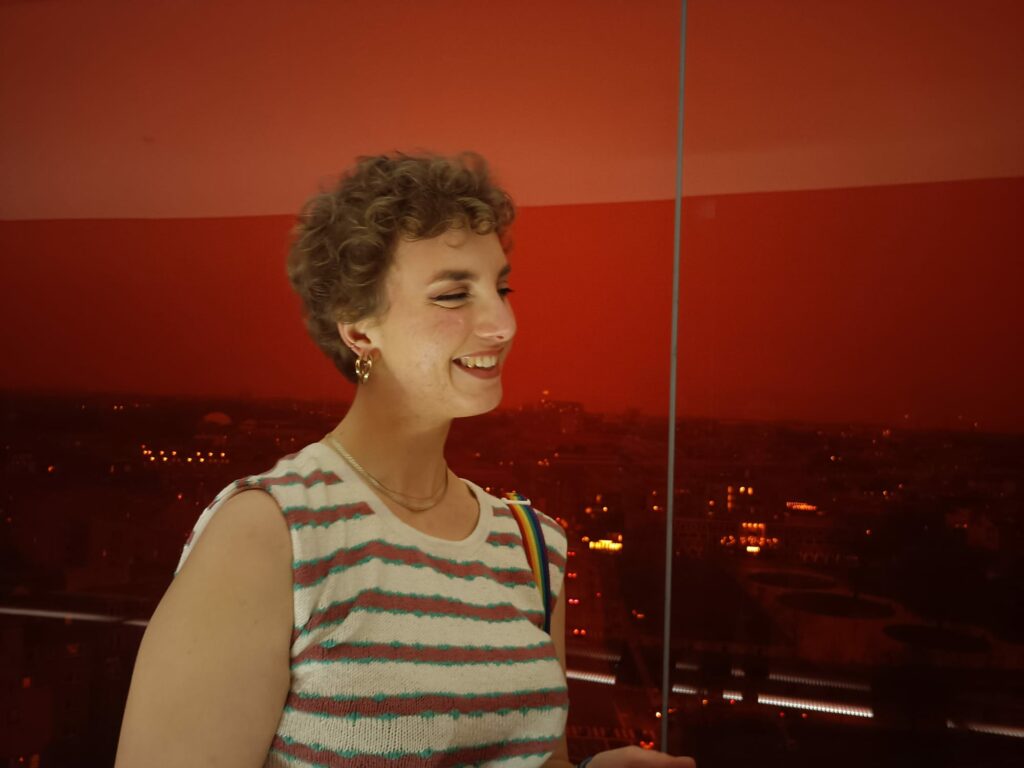
Children’s Literature, Media and Culture (CLMC for short) is one of the most notable programmes dedicated to research on childhood. Children’s literary and cultural studies is a new and still marginal area of academic interest, but this novelty is the strength of the programme. It attracts students from different backgrounds who can think of various approaches to childhood and girlhood specifically.
There are many writers and artists among CLMC students. It comes out naturally. When you are exposed to a large body of texts and visual art as a part of your everyday life, you usually begin or continue finding your own voice, expressing what others did not express before you. In the first part of this creative writing series, I talked to Theda Ostermann.
Q: You write in German and English. How would you describe your writing practices in both languages? Do you feel that some themes demand one language and some another?
A: Lovely question. I noticed that I am much more playful with the German language. I twist it around, squeeze it into new meanings. Often I play with oppositions and the gravity of situations. Since it is my mother tongue it comes more naturally to me, which sometimes results in sudden outpours of text where I just write and write and write until my head is empty. While writing in German is more of a way to detangle my thoughts and feelings, I feel like I have a stronger ability to evoke pictures in English. I think my writing process in English takes more time because it comes with more thinking and little things I need to keep in mind.
Q: I like how your dialogical poem “Dream Dealer” starts from a sudden point and ends at one, as if fading away. Does writing help you communicate with the outside world?
A: It definitely does. For the longest time I thought “who would want to read my little poems about personal struggles… everyone deals with these things and much bigger issues” but I realised that it is not only important and healthy for me to write about whatever is on my mind, but that people actually enjoy reading texts that are personal enough to be their own experiences.
Q: What is some new thing about girlhood that you learned from CLMC?
A: What especially stuck with me was a discussion about “diary keeping” vs. “journaling” and how the former is much more gendered. It evoked images of little pink diaries with a lock and a key, possibly a heart on the cover that left enough room to scribble your name into. Indicating that young girls thoughts and dreams need to be locked away from prying eyes and that secrets and aspirations are to be kept behind lock and key (literally). The construction of girlhood as it currently is harshly restricts what girls can and should experience, hinting at a future womanhood where harboring significant dreams within the confines of secrecy is not only encouraged but deemed necessary.
Daring yourself to dream… it shouldn’t be a hush-hush affair hidden behind locked doors or trapped in some secret diary. I think it should be a raw, emotional, BIG thing, something that bursts out in whatever way feels right. Girls should take up space and let their dreams spill off the pages of their diaries!
Dream Dealer
How many wishes do you have
How much for a wish
How much for a dream
A secret for a dream
How many secrets can you keep
A promise for a wish
How many promises can you keep
How many obstacles do you see
Many many many
None at all
-Theda Ostermann
-Glafira Soldatova
Junior Girl
Girl Museum Inc

What a beautiful poem! Absolutely loved it. Also found it fascinating to hear about Theda’s different processes of writing in German and English. Makes me think of language as different tools for different situations, not only to communicate with other but also to communicate with yourself. Super interesting x